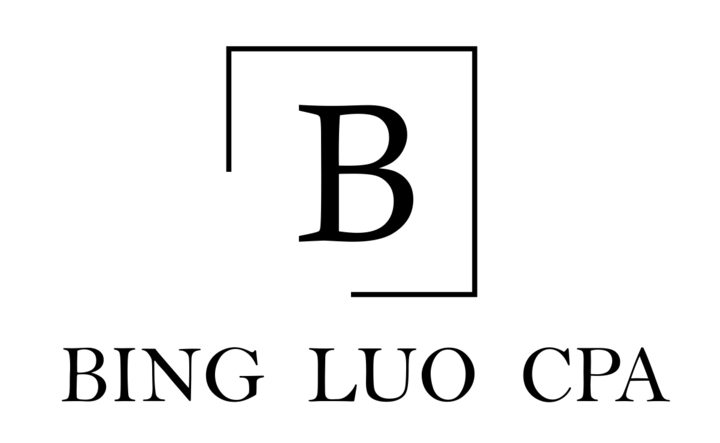
Tax Savings for Small Businesses: A Guide to the Qualified Business Income (QBI) Deduction
March 01, 2025

The Qualified Business Income (QBI) Deduction remains one of the most valuable tax breaks for small business owners and self-employed individuals. Enacted under the 2017 Tax Cuts and Jobs Act (TCJA), this deduction allows eligible taxpayers to reduce their taxable income by up to 20% of qualified business income. However, eligibility and deduction amounts vary significantly depending on business type and the taxpayer’s income level. We break down the rules for each category to help you navigate this complex but rewarding tax benefit in this post.
Understanding the QBI Deduction
The QBI deduction (IRS Section 199A) applies to pass-through entities [1], which include sole proprietorships, partnerships, S corporations, and certain estates and trusts. It allows business owners to deduct up to the lesser of the following two amounts:
- 20% of their qualified business income.
- 20% of the taxpayer’s taxable income, minus capital gains and qualified dividends.
This is the maximum QBI deduction one can take for a given tax year. It’s important to note that the QBI deduction is a separate deduction that business owners can claim regardless of whether they itemize their deductions or not.
Qualified business income broadly speaking refers to the business’s net profit, i.e., income minus expenses and deductions, from a qualified trade or business. Note that certain income is excluded when calculating QBI. These exclusions are:
- Capital gains or losses
- Dividends
- Interests (except when properly allocable to a trade or business, like lending)
- Any reasonable compensation paid to the taxpayer
- Guaranteed payments made to partners and shareholders
The definition of a qualified trade or business is quite extensive. It refers to any trade or business operating in the U.S. except services provided as an employee.
For Tax Year 2024, if the taxpayer’s total taxable income – that is, your business income plus all other personal income – is at or below $191,950 for single filers or $383,900 for joint filers, you will qualify for the maximum QBI deduction mentioned above. However, the Congress is generous only up to a point. If your income surpasses the above-mentioned limits, the IRS has rules that limit the amount of QBI deduction business owners can claim and these limits hinges on two critical factors:
- Whether or not the business is a Specified Service Trade or Business (SSTB).
- The taxpayer’s taxable income relative to IRS thresholds.
Let’s further discuss these two factors below.
What is a Specified Service Trade or Business (SSTB) and Why it Matters?
A Specified Service Trade or Business (SSTB) is a business where the primary asset is the reputation or skill of one or more of its employees or owners. The IRS defines SSTBs broadly, encompassing fields such as:
- Health: Doctors, dentists, therapists, and other medical professionals.
- Law: Attorneys, paralegals, and legal consultants.
- Accounting and Financial Services: CPAs, financial advisors, and tax preparers.
- Consulting: Management, marketing, or technical consultants.
- Performing Arts: Actors and musicians.
- Athletics: Athletes and coaches.
- Other Services: Lobbyists, public relations firms, and certain brokers.
SSTBs face stricter limitations on the QBI deduction as taxable income increases. High-earning SSTB owners may lose the deduction entirely, while non-SSTBs can often retain partial benefits.
Key Exceptions:
- Architects and Engineers: Explicitly excluded from SSTB classification by Congress.
- Mixed Businesses: If a business has both SSTB and non-SSTB components (e.g., a restaurant offering cooking classes), the de minimis rule is used to determine whether the business is a non-SSTB or not.
- Reputation-Based Work: Even non-traditional fields (e.g., social media influencers) may be classified as SSTBs if revenue relies heavily on an individual’s reputation.
Having defined what constitutes a Specified Service Trade or Business (SSTB), we now explain how income thresholds determine the QBI deduction for both Non-SSTBs and SSTBs in the following sections.
Income Limitations for Non-SSTBs
Non-SSTBs include businesses in industries such as manufacturing, retail, real estate, and agriculture—where the reputation or skill of individual employees or owners is not the primary revenue driver. For Tax Year 2024, the QBI deduction income limitations for Non-SSTBs are listed in the following:
- Taxable income is below the lower threshold ($191,950 for single filers or $383,900 for joint filers): The maximum QBI deduction may be claimed.
- Taxable income exceeds the upper threshold ($241,950 for single filers or $483,900 for joint filers): The QBI deduction is reduced to the wage and qualified property (WQP) limit, which is the greater of:
- 50% of the taxpayer’s share of W-2 wages paid by the qualified trade or business.
- 25% of W-2 wages, plus 2.5% of the taxpayer’s share of the unadjusted basis of qualified property held by the trade or business going back up to 10 years.
- Taxable income falls between the lower and upper threshold: In this case, a formula is used to reduce the QBI deduction amount towards the WQP limit based on how much the taxpayer’s income exceeds the lower threshold.
Income Limitations for SSTBs
SSTBs are subject to stricter rules compared to non-SSTBs, with the QBI deduction phasing out entirely for high earners. For Tax Year of 2024, the income limitations for SSTBs is as follows:
- Taxable income is below the lower threshold ($191,950 for single filers or $383,900 for joint filers): The maximum QBI deduction may be claimed.
- Taxable income exceeds the upper threshold ($241,950 for single filers or $483,900 for joint filers): No QBI deduction may be claimed.
- Taxable income falls between the lower and upper threshold: In this case, a formula is used to reduce the QBI deduction amount depending on how much the taxpayer’s income exceeds the lower threshold.
Ways to Maximize the QBI Deduction
If you are subject to the income limitations, you could consider:
- Invest in qualified property to leverage the 2.5% basis component.
- Hire employees (W-2 earners) instead of contractors (who get issued 1099-NECs).
- Optimize W-2 wages to meet the 50% threshold.
- Defer income, accelerate expenses, or increase retirement plan contributions to bring down taxable income.
If the business has both a non-SSTB component and a SSTB component, e.g., a restaurant also offering a cooking class, you could consider establishing a separate business for the SSTB component. This approach prevents your entire business from being classified as an SSTB if the de minimis exception does not apply.
The Future of the QBI Deduction
The deduction is set to expire after December 31, 2025 unless Congress acts. With President Trump now in office and a Republican-led Congress, it is projected that policymakers will preserve a majority of the TCJA provisions, which is likely to include an extension of QBI deduction. Therefore, by understanding these rules, you can strategically position your business to take full advantage of the QBI deduction.
[1]: Owners of certain agricultural or horticultural cooperatives, real estate investment trusts, and publicly traded partnerships are also eligible for the QBI deduction, but their use of it is not covered in this post.
Tax laws are complex. Consult a CPA or tax advisor for personalized guidance. At Bing Luo CPA, we are committed to providing expert guidance to help you make well-informed decisions.